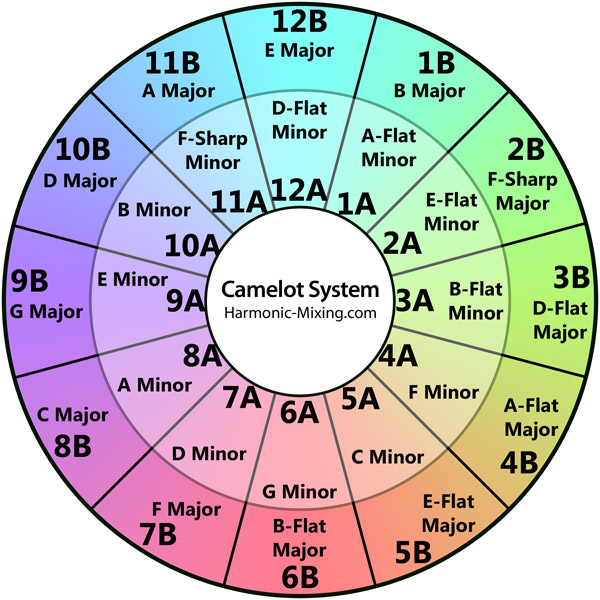
For a DJ, knowing what kind of mood a key gives can also be interesting to build a story in your sets. At least that’s one of the influencing factors. A song about death would likely be in Ab Major (4B), melancholy in D minor (7A), etc. If a musical composer wants to create a childish song, he would likely write in C Major (8B). Indeed, key signatures are associated with particular feelings like love, death, melancholy, etc. Knowing key signatures is also an interesting aspect. This explains why transitioning from adjacent key signatures sounds so great, they are very similar! Adjacent squares have 6 notes out of 7 in common. Each square represents a key signature, also called scale. The Camelot wheel is a translation of the circle of fifths which is used a lot in music. The meaning of the Camelot wheel in music In that case, make sure not to overlap instrumentals so the harmonics do not clash. That’s why it’s important from time to time to jump to a completely different key so it’s less monotonous. Therefore it can be boring if the same key signature is kept too long. Indeed, though it leads to awesome transitions, all the songs will have the same tonalities. Last but not least, mixing only in key can lead to very boring sets. Indeed, an energy boost works better when the instrumental of Song B starts when the one from Song A stops (no overlapping). In that case, it’s better to stick to intros/outros or know your song’s phrasing very well. However, when doing an energy boost, the tonalities are not fully compatible. For instance, you can mix a vocal of song A with the instrumental of song B, that would sound great because they are harmonically compatible. Songs selected by the “T-method” can be mixed at almost any point in the songs. It is also crucial to find the right moment to mix songs. Indeed, speeding or slowing a song will change its key signature without it. It is also important to put the key lock on. In such cases, the algorithm would be wrong. For instance, a song may not be in the diatonic scale or it can have a changing key signature from start to end. First, the key detection algorithms are not always right. That’s why I wrote “Trust your ears” as the 5 th bullet point. Please note that the Camelot wheel does not do everything. Tracks sorted by Camelot keys on Serato DJ Pro. Chose the next song either by the “T-method” or by doing +2.Analyze your tracks in your favorite DJ software.
#Mixed in key chart how to
In short, this is how to use the Camelot wheel:
#Mixed in key chart software
Most DJ software nowadays has a key detection algorithm, you can thus use them or use an external application such as “Mixed In Key”. Now that you understand the principles, you also need to know what key signature your songs have.

Indeed, it corresponds by shifting up all the notes by one semi-tone. The only additional rule that may make sense is the “-5” in my opinion. You may find additional “rules” online but many of them are false because they don’t have any music grounding. That makes sense since they use the exact same notes!

Notice that you can mix a song in the exact same key (here 6B). In the example above, from a 6B song, the next one can be 6B, 6A, 7B, 5B (T-method), or 8B (energy boost). The “T-method” to perform harmonic mixing thanks to the Camelot wheel. In fact, most song nowadays uses the diatonic scale, a scale that keeps only 7 notes out of the 12. In music, using all the notes from the chromatic scale for a given song is very rare.

I said pianos to simplify the explanation, but that applies to all western instruments indeed.Īll these notes create a system that is called the chromatic scale. By doing that you obtain the same note but with a higher tone. By going up to 12 “keys” you go up to one octave. It corresponds to the notes you all know: C, C#, D, D#, E, F, F#, G, G#, A, A#, B.Īll piano nowadays are tuned to fit this rule, the “#” notes correspond to the black keys and the other to the white keys. In the theory of music, an octave is decomposed into 12 “pitches”. Let’s first focus on what is the circle of fifths. The ordering on the wheel is also more convenient to use for DJs. The Camelot uses numbers from 1 to 12 instead of the regular C, D, E, F, G, A, B letters. They can be considered the same and use the same purpose. The Camelot wheel is a rebranded circle of fifths with easier key notations. The Camelot wheel and the circle of fifths: twin sisters?


 0 kommentar(er)
0 kommentar(er)
